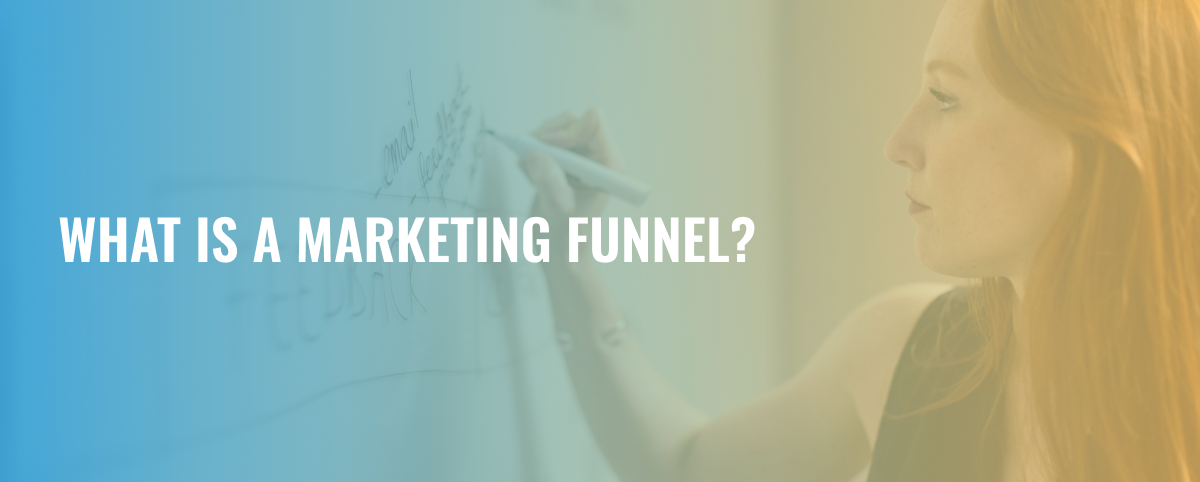8 minute read
Understanding Marketing Funnels: How They Work, Stages, and Examples
Marketing funnels are an essential concept for anyone who wants to successfully promote their products or services. Understanding how these funnels work helps companies attract and convert prospects. The marketing funnel consists of several stages, each with a specific purpose to guide a customer to a purchasing decision. By understanding the different stages and implementing effective strategies, companies can create a well-functioning marketing funnel that increases conversions. Let’s explore the concept of marketing funnels.
WHAT IS A MARKETING FUNNEL?
A marketing funnel is a strategic approach used by companies to better understand and analyze customer behavior and guide them through the purchasing process. Essentially, it is a visualization of the customer journey, from the first encounter with a product or service to the final purchase decision. The purpose of a marketing funnel is to attract potential customers through various channels, educate them about your product or service, and ultimately convince them to take action. By breaking down the customer journey into different stages, companies can tailor their marketing efforts and create a more effective and targeted approach to increasing sales and revenue.
WHY IS A MARKETING FUNNEL IMPORTANT?
A marketing funnel is essential for businesses as it helps potential customers move through the different stages of the buying process. It consists of several steps, from creating brand awareness to closing a sale. This allows businesses to understand the needs of their target audience and adapt their marketing strategies accordingly, maximizing their chances of converting leads into loyal customers.
WHAT ARE THE DIFFERENT TYPES OF FUNNELS?
-
SALES FUNNELS
A sales funnel is a step-by-step process that guides potential customers through several stages to make a purchase. The purpose of a sales funnel is to convert potential customers into paying customers by building trust and providing valuable information about the product or service. This type of funnel is often used in eCommerce and B2B companies.
-
WEBINAR FUNNELS
A webinar funnel is a combination of live or recorded webinars and sales funnels. It is an effective way to connect with potential customers, build trust, and educate them about a product or service. Webinars can attract a large number of potential customers and a well-designed funnel can convert them into paying customers. This type of funnel is usually used by companies that offer online courses, coaching, or consulting services.
-
EMAIL FUNNELS
An email funnel is a series of emails sent to a prospect to maintain the relationship, build trust, and ultimately convert them into a customer. It typically starts with a signup form to capture a prospect’s email address and then sends a series of automated emails with valuable content and offers. Email funnels are popular because they are effective, cost-effective, and allow businesses to stay in touch with potential customers.
-
VIDEO MARKETING FUNNELS
A video marketing funnel uses videos to attract, engage, and convert leads. This type of funnel is especially useful for companies that want to present their product or service in a visually attractive way. Video marketing funnels can be used on social media, on landing pages, or as part of a webinar or email funnel.
-
LEAD MAGNET FUNNELS
A lead magnet funnel is a way to attract potential customers by offering something valuable in exchange for their contact information. It could be a free ebook, guide, checklist, or other valuable content that helps solve a problem or addresses a problem for your target audience. This type of funnel is an effective way to build a list of potential customers and encourage them to make a purchase.
-
HOME PAGE FUNNELS
Funnels on the home page are designed to attract the attention of website visitors and lead them to a specific action, such as signing up for a newsletter or making a purchase. They can be very effective at converting website visitors into customers by providing a clear and compelling call to action.
STAGES OF THE MARKETING FUNNEL
-
AWARENESS
The first stage of the marketing funnel is awareness. The goal of this phase is to create buzz and attract the attention of potential customers. This can be achieved through various channels such as social media, advertising, public relations, and content marketing. The goal is to make potential customers aware of your brand, products, and services. Without sufficient awareness, it becomes a challenge for companies to move customers through the funnel to the next stage.
-
CONSIDERATION
Once potential customers are aware of your brand, they enter the consideration stage. This is where they start to evaluate your offer and compare it to the competition. At this stage, it is crucial to provide potential customers with all the necessary information, such as product features, prices, and customer reviews, to help them make an informed decision. Businesses can also use retargeting and email marketing strategies to stay top of mind for potential customers and support their decision-making process.
-
CONVERSION
In the conversion phase, the actual purchase decision is made. At this point, potential customers have evaluated your offer and are ready to become paying customers. At this stage, companies need to make the purchasing process as smooth and easy as possible to avoid hesitancy or potential cancellations.
-
LOYALTY
In the loyalty stage, companies focus on retaining customers by providing excellent customer service and personalized experiences. This includes loyalty programs, exclusive offers, and excellent customer communication. The goal is to create a positive customer experience that will lead to repeat purchases and brand loyalty.
-
ADVOCACY
The final step in the marketing funnel is advocacy. This stage is about turning satisfied customers into brand ambassadors. These customers not only continue to make purchases, but also actively promote the brand within their networks through word of mouth and positive reviews. Companies can promote their business by offering unique products and services and constantly engaging with their customers.
THE DIFFERENCE BETWEEN B2B AND B2C MARKETING FUNNELS
A marketing funnel is an important tool for companies to increase sales and build brand awareness. It is a step-by-step process that guides a potential customer through the purchasing path. There are some noticeable differences between B2B and B2C marketing funnels. B2B marketing funnels are typically longer and more complex due to the involvement of multiple decision makers and a longer sales cycle. In contrast, B2C paths are usually shorter and simpler because they focus on a single customer making a purchase decision. B2B funnels rely heavily on targeted content and relationship building, while B2C funnels rely on emotional appeal and consumer behavior. Ultimately, understanding these differences is key to developing an effective marketing strategy for B2B or B2C companies.
HOW TO INCORPORATE A FULL-FUNNEL APPROACH IN YOUR MARKETING
This approach targets potential customers at every stage of their buying process, from the top to the bottom of the funnel. Let’s take a closer look at how you can incorporate a full-funnel approach into your marketing strategy.
-
TOP-OF-THE-FUNNEL (TOFU)
This is the awareness stage where the goal is to attract a large audience and introduce them to your brand. To reach this stage effectively, you can use tactics like social media marketing, paid advertising, and content marketing.
-
MIDDLE-OF-THE-FUNNEL (MOFU)
At this stage, your audience has shown interest in your brand and this is your opportunity to convert that interest into a desire to purchase. Strategies like email marketing, retargeting, and webinars can help you take potential customers to the next stage.
-
BOTTOM-OF-THE-FUNNEL (BOFU)
This is the conversion phase where the focus shifts to converting interested prospects into paying customers. Use tactics like personalized offers, product demos, and customer reviews to persuade customers to buy.
CONCLUSION
By using a marketing funnel, companies can effectively reach and communicate with their target audience, resulting in higher conversion rates and increased sales. The key to a successful marketing funnel is understanding the needs and preferences of your target audience, constantly adapting and optimizing your strategy to effectively respond to their needs. Ultimately, a marketing funnel is a key tool for companies looking to drive growth and maximize return on investment.

